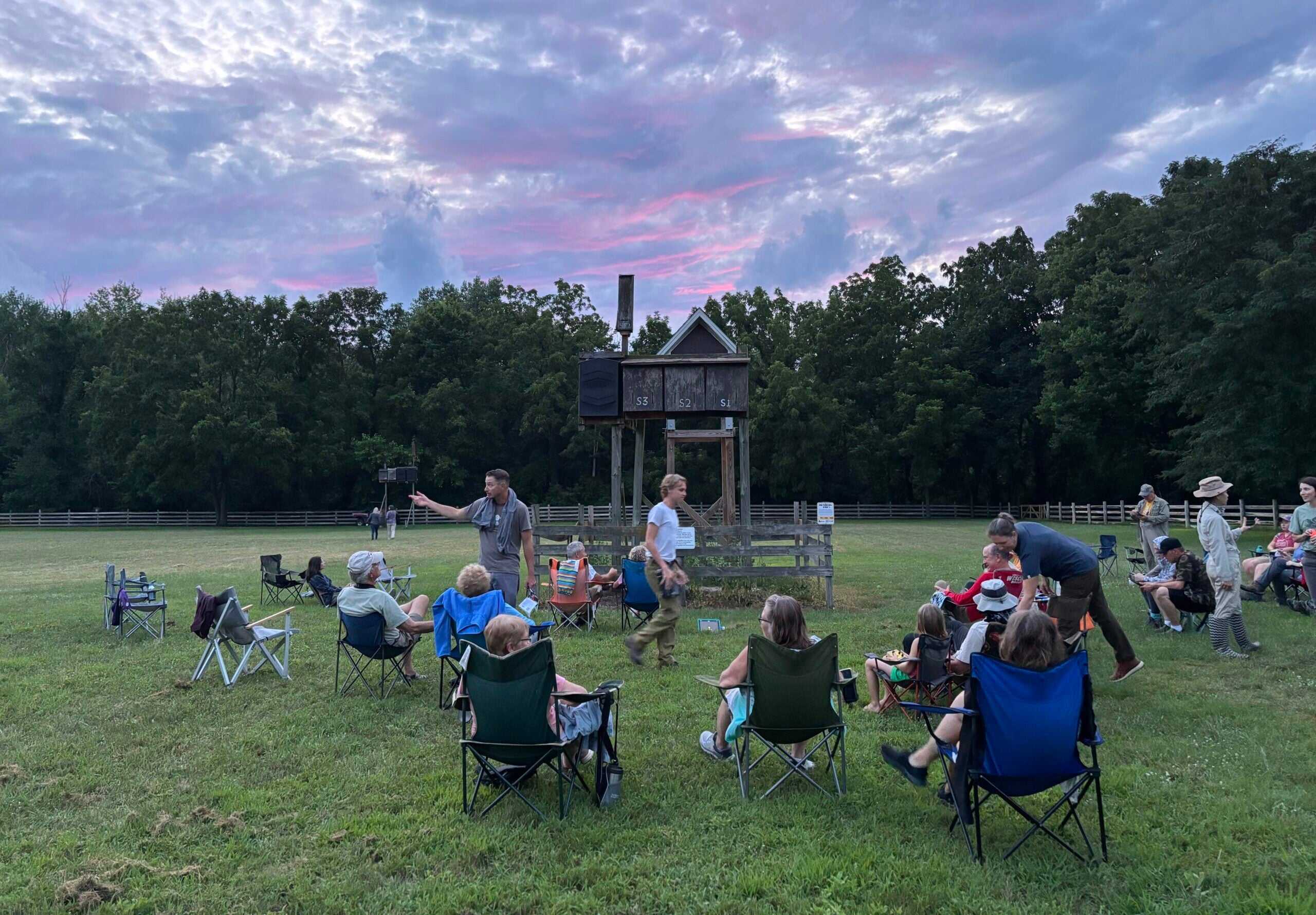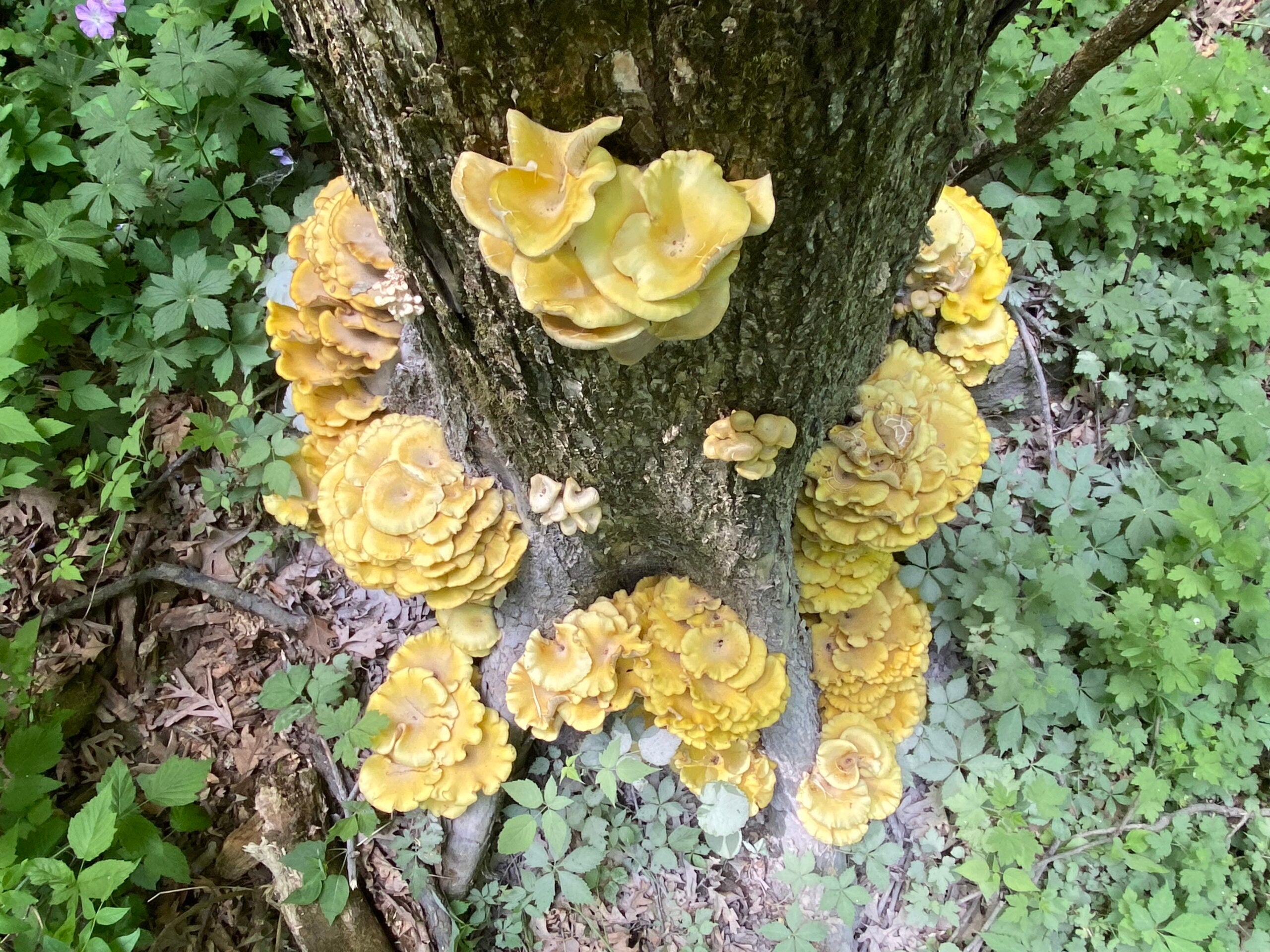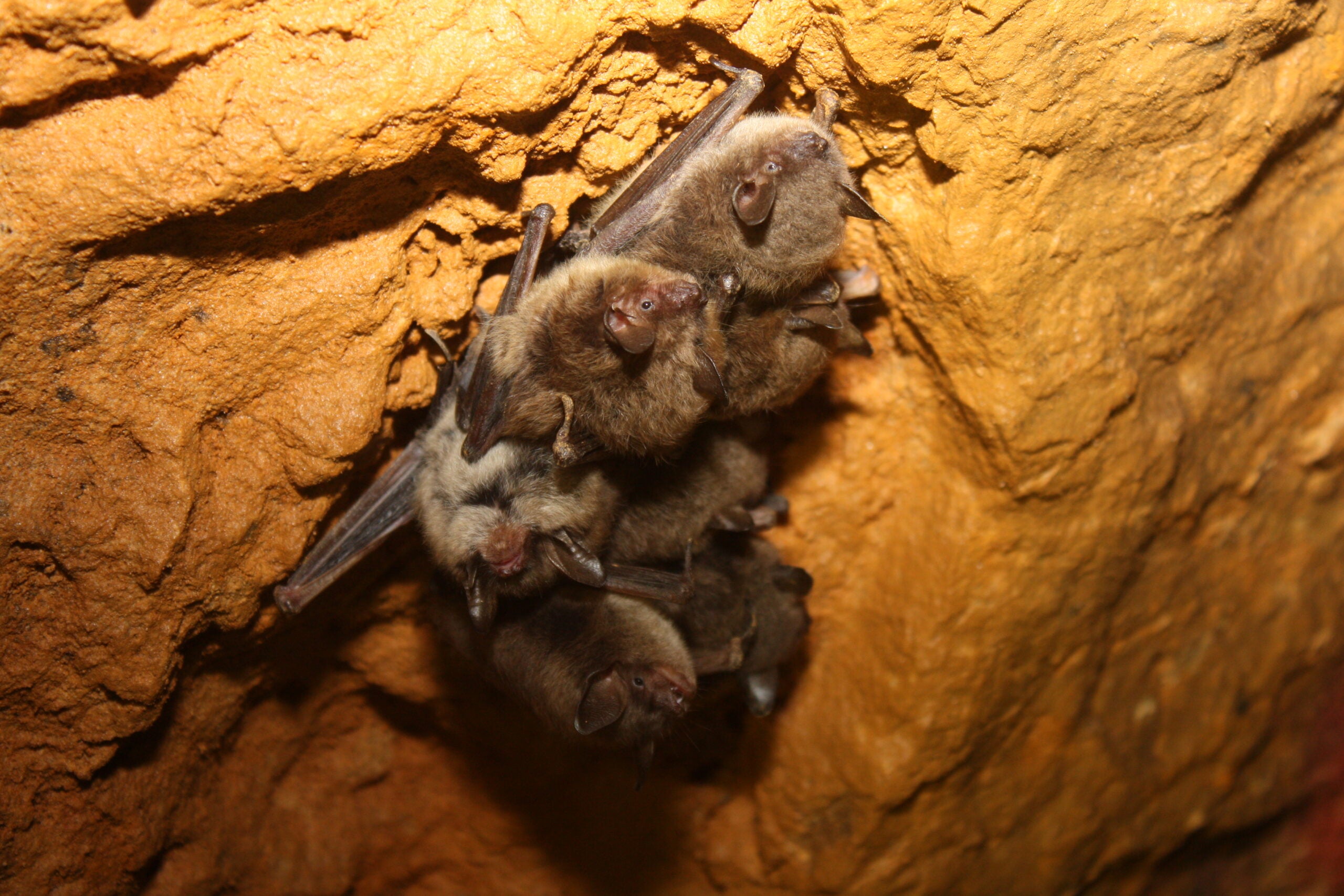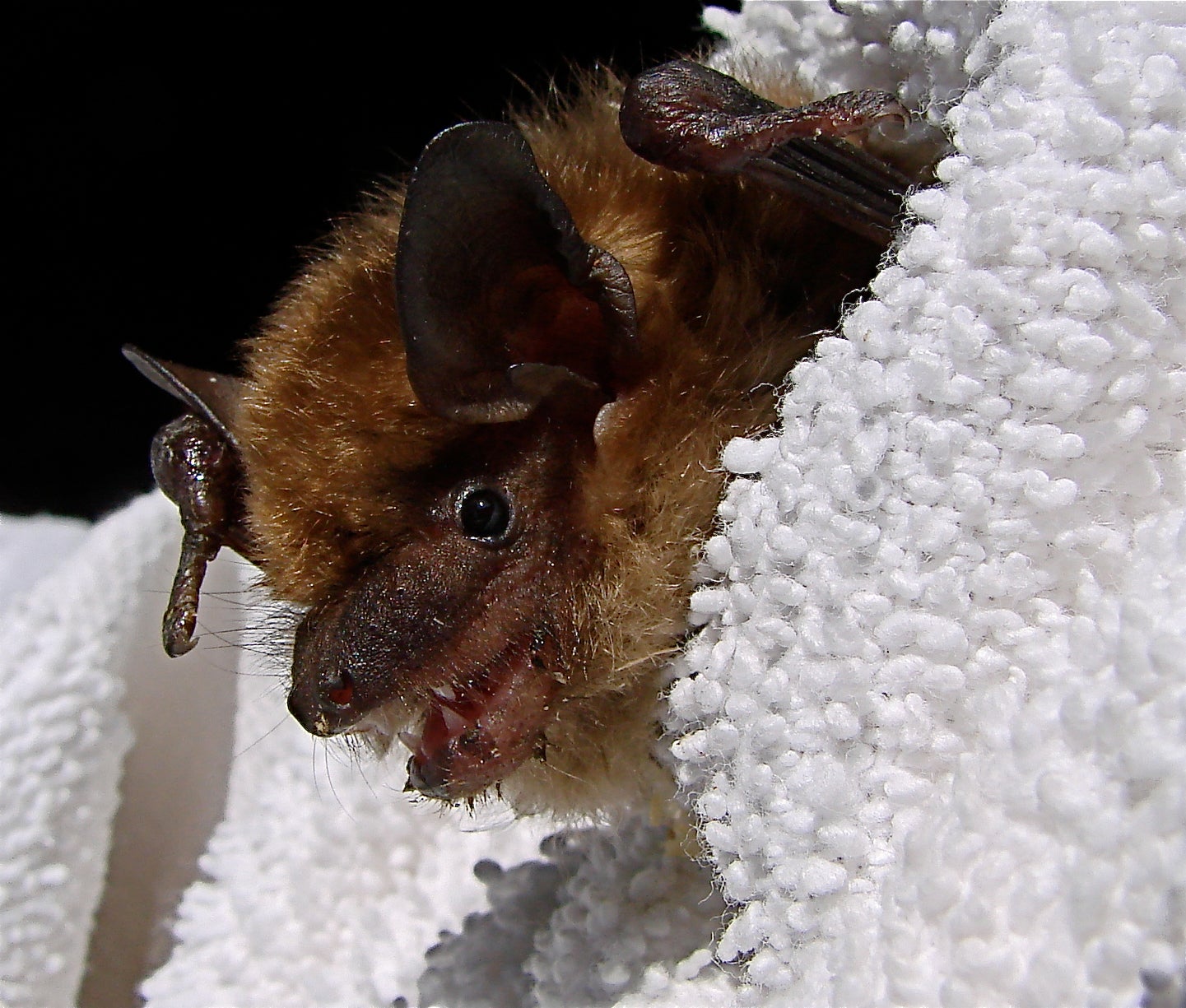Bats are a crucial part of an ecosystem. Larry Meiller out how our bats are doing, what the current status of White-Nose Syndrome is, and gets a preview of the upcoming Wisconsin Bat Festival.
Featured in this Show
-
White-Nose Syndrome Poses Serious Threat To Wisconsin’s Bats
Earlier this year, white-nose syndrome was found in a cave in Grant County, putting Wisconsin in the company of 25 U.S. states and five Canadian provinces with confirmed cases.
White-nose syndrome, or WNS, is a fungal disease that interrupts bats’ ability to hibernate, according to David Blehert, a microbiologist with the federal National Wildlife Health Center in Madison. The fungus attaches onto the bats’ skin, he explained, particularly on the wings, which comprise more than 80 percent of the surface of their bodies.
“It’s a very delicate and specially adapted type of skin,” Blehert said. “And not only is it important for them to have healthy and intact wing skin to fly, but there are a number of other physiological functions moderated through the wing.”
Those include circulation, control of body temperature and blood pressure, and slowed respiratory rates that are critical during hibernation — all functions that WNS interrupts.
One of the challenges of eradicating or even controlling WNS is that the fungal spores drop off of the bats roosting in the cave and then continue to grow and multiply in the soil on the cave floor. This means that even if all of the infected bats were to be removed from a cave, WNS would still be present in the environment.
Four of Wisconsin’s seven species of bats are at risk of WNS because they overwinter in caves, according to Jennifer Redell, a conservation biologist and cave and mine specialist with the state Department of Natural Resources. Those species — the little brown bat, the large brown bat, the northern long-eared bat, and the eastern pipistrelle — are also the most numerous in the state.
Wisconsin’s migratory species — the hoary bat, silver-haired bat and eastern red bat — are not at risk because they do not congregate in caves.
Blehert said that the arrival of WNS to the state is concerning, in part, because bats play an important role in a healthy ecosystem. They consume a large number of insects — not only ones that may be a nuisance to people, but also insects like moths that can cause significant crop and forest damage. Said Redell, Wisconsin’s bats save farmers between $658 million and $1.5 billion annually in pesticides. They are also helping to keep those chemicals out of the environment as well.
While there is cause for concern for the bat population, ecologists have been preparing for the threat and are responding to it. Blehert said that research is being done on possible fungicides that can at least decrease infection levels.
“Even if it’s not 100 percent effective, even if you could shift the disease from lethal to sub-lethal … I think that could be considered effective,” he said.
However, Redell said that there are complications to consider when using fungicide. For example, she said, if a structure is put in place that makes bats crawl through the fungicide as they enter the cave, that could leave them vulnerable to predators.
For now, humans have been excluded from some caves to limit inadvertent introduction of the fungus from one cave to another.
For people who are interested in helping Wisconsin’s bat population — and to learn more about bats in the state and around the world — consider attending the Wisconsin Bat Festival that will take place the weekend of Oct. 3 to Oct. 5 at several venues in Milwaukee.
One way that residents can help the DNR’s bat program staff is to take part in acoustic monitoring efforts. Find out how to get involved here.
At home, planting flowers that nourish night-feeding insects will ensure that bats have a reliable source of food. This PDF download lists some plant options. A clean and well-tended garden pond or bird bath can also be good for those night fliers as well as avian visitors. If there is a water source within about a quarter-mile that allows for the bats to swoop down and drink on the fly, installing a bat house may encourage bats to move in. The DNR provides directions for building and placing a bat house here.
Episode Credits
- Larry Meiller Host
- Judith Siers-Poisson Producer
- Jennifer Redell Guest
- David Blehert Guest
Wisconsin Public Radio, © Copyright 2026, Board of Regents of the University of Wisconsin System and Wisconsin Educational Communications Board.



